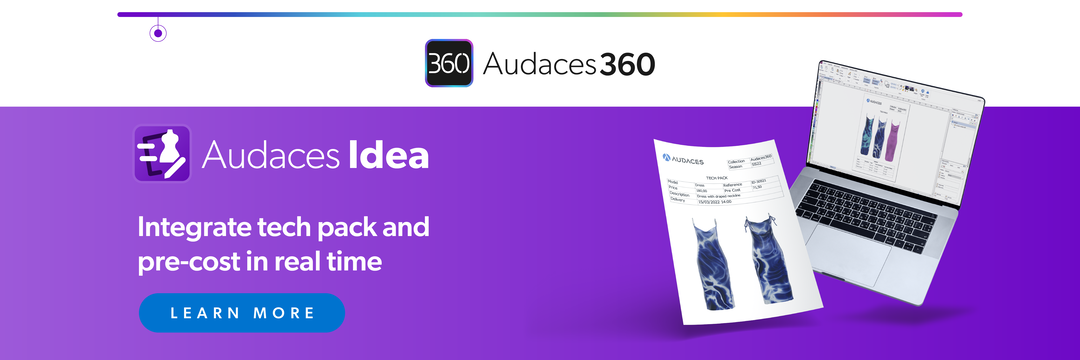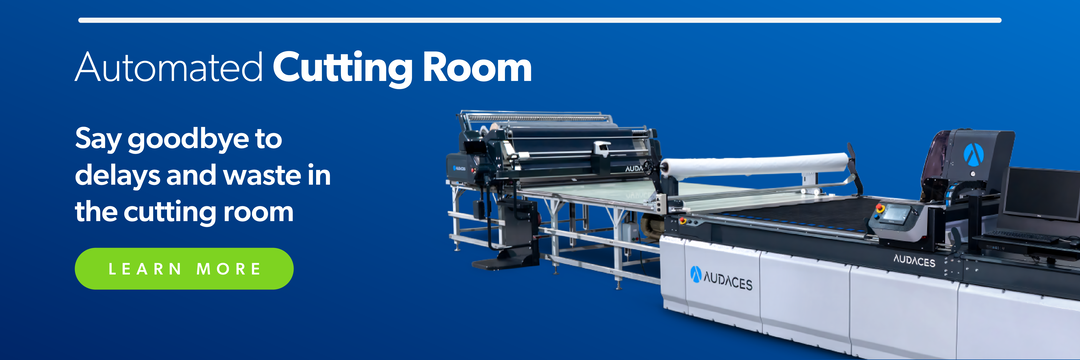Summary
- In today’s business world, every single activity your company undertakes is important. You must have complete control of its management to achieve success.
- Process management is a tool that empowers you to have oversight of everything going on in your business. As a result, you can maintain optimal performance in all areas.
- Experience the future of the fashion industry with Audaces360. Start your free trial now!
In the textile industry, every step matters, from design to delivery. A small mistake in one area can affect the whole production. That’s why knowing how to manage processes well is key.
Process management is really important in this situation. This begs the question: do you know exactly what process management is? And how does it help textile companies grow, save time, and reduce waste?
If you’ve asked yourself these questions, you’re in the right place. In this text, you’ll find simple answers, real examples, and useful tips.
Enjoy your reading!
Sumário
Why does understanding process management matter for your apparel business?
Running an apparel business takes more than creativity. It also needs structure, and that’s where process management comes in.
Understanding how you’re performing tasks helps you find ways to do them better. By creating a process for each step, you gain more control.
Effective process management makes your business run smoothly, even during busy times. It reduces mistakes and helps everyone stay on the same page.
When you manage tasks well, teams waste less time. This is the heart of workflow management—making sure every job is in the right order, with fewer delays.
All of this leads to increased productivity. Your team does more in less time, and your products reach the market faster.
In short, understanding process management gives you the tools to grow, improve, and compete.
Learn more: What is a smart factory and how to become one?
What is process management?
Process management is a systematic way to control how a business does its work. It means looking at each task and making sure it follows the right steps.
In the apparel industry, this is vital. From choosing fabrics to shipping orders, every action matters. Managing these steps keeps everything on track.
A process includes a beginning, middle, and end. It may involve different people, machines, and tools. When you define these clearly, your team knows exactly what to do.
Good process management also helps spot problems early. It shows where you’re wasting time or materials. That means you can fix issues and bottlenecks before they grow.
If your company has many business processes, managing them well means each area works better and supports the others.
Learn more: Boost your garment manufacturing with industrial management
Most common types of process management
Process management has different approaches depending on the needs of the business. Some methods focus on technology, while others center around people or documents.
Each type serves a specific purpose, but all aim to improve efficiency and control.
Let’s explore three of the most common types of business process management (BPM): integration-centric, human-centric, and document-centric.
Integration-centric BPM
Integration-centric BPM (Business Process Management) connects different systems and technologies. It ensures that software tools and databases communicate with each other, allowing data to flow smoothly across the business.
This type of BPM is ideal for businesses that rely heavily on technology. It helps automate tasks, reducing the need for manual work.
By integrating various platforms, companies can manage multiple processes from a single interface.
The main goal of integration-centric BPM is to make processes more efficient and less error-prone. It creates a seamless experience across different departments and systems, improving speed and accuracy.
As a result, businesses can deliver products and services faster, boosting overall performance.
Human-centric BPM
Human-centric BPM prioritizes the people involved in business processes. It places the emphasis on tasks that require human decision-making or intervention.
These processes often involve collaboration, communication, and creativity. It’s useful when businesses rely on employees for critical decisions or actions.
It also allows workers to manage their tasks while having the flexibility to make choices. This type of system helps organize and track activities, making it easier for teams to stay on top of their work.
By improving how people interact with workflows, human-centric BPM enhances productivity. It helps avoid mistakes, ensures accountability, and makes team collaboration more efficient.
Document-centric BPM
Document-centric BPM focuses on managing documents and data throughout business processes. It ensures that the right information is available to the right people at the right time.
In this approach, processes revolve around creating, storing, and sharing documents. The system helps businesses track documents, manage approvals, and maintain records. It also ensures you’re following all necessary steps before finalizing any document.
This type of BPM is crucial for industries like legal, finance, or healthcare, where proper documentation is key. By streamlining document management, businesses reduce delays and avoid errors.
What are the stages of process management?

Identifying challenges and opportunities
The first step is to look closely at how your business works. You need to find what’s going well and what needs to improve.
Start by reviewing your business operations. Are there delays? Do tasks get repeated? These are signs of challenges that need attention.
You should also think about your strategic goals. Does your current process support them? If not, you may need to change how you do things to reach your targets.
Tools like process mapping can help. They give a clear picture of each step. With this, you can make smart changes that boost customer satisfaction and business success.
Integrating new tools and methods
After finding what to improve, it’s time to bring in new tools or ways of working. These could be machines, software, or updated steps in your process. The goal is to work smarter, not harder.
Many businesses now choose to make their process automated. If this is your case, keep in mind that these new methods should match the company’s needs. Don’t change just to follow trends, pick tools that really make work easier and faster.
Before using new systems, test them. Make sure they work well with the rest of your process.
Learn more: Why should your company invest in fabrication technology?
Training teams
Even the best tools won’t help if people don’t know how to use them. That’s why training is an important step in process management.
You need to prepare your team members for the changes. Show them what’s new and why it matters.
Clear training helps reduce mistakes, and it also builds trust and confidence within your team. People work better when they understand what to do.
Want to take your company beyond process management and reach peak productivity? Download our free exclusive guide filled with golden tips to get you there!
Monitoring technology implementation
Once new tools are in place, it’s time to monitor how they work. This step helps you see if your plan is successful.
Watch closely in the first weeks. Are things running smoothly? Are there new problems? If so, act quickly to fix them.
In addition, ask for feedback from your team. They use the tools every day, so they’ll know what works and what doesn’t.
Remember monitoring is not about control—it’s about learning and improving every part of the process.
Defining business KPIs
To measure success, you need to set clear goals. Choose KPIs (Key Performance Indicators) that match your business needs. They could be about time, cost, quality, or customer reviews.
When you track the right numbers, it’s easier to see progress. You know if the new process is helping or if something needs to change.
Finally, review your KPIs often. Good goals should grow with your business. That way, you always stay on the path to better performance.
Learn more: 5 fashion production performance indicators to monitor
Benefits of process management in fashion production

Process management brings many benefits to the fashion industry. It helps businesses work better, faster, and smarter.
Let’s explore some of the key advantages it offers.
Increased efficiency and productivity
Process management helps teams do more in less time. It removes steps that don’t add value, leading to less waste and more focus on what matters. When work follows a clear path, people know what to do next.
Using tools and systems also helps cut down on errors. Fewer mistakes mean less rework, which saves both time and money.
It also supports continuous improvement. This means you keep checking how things work and always look for ways to get better.
Over time, these small improvements lead to big results. The business becomes more productive and more competitive.
Learn more: Enhance productivity in sectors of the textile industry with technology
Standardized quality
Fashion customers expect consistency. They want each product to match in size, look, and feel. And process management helps make that happen.
Standards and checkpoints make it easy to spot problems early. Fixing them right away saves time and protects your brand.
The bottom line is standardized quality builds trust. It proves that your brand is careful with every single product.
Learn more: How can technology enhance the quality of textile products?
Faster decision-making
When processes are clear, information flows faster. Your teams know where to find any information they might need, not wasting time looking for it. This helps leaders make quick and smart choices.
They can react to changes in demand, fix problems, or test new ideas without delay.
With strong processes, people work with confidence. This makes every decision faster and more effective.
Manage your apparel business with the best technology

Audaces Isa
Streamline your workflow, accelerate production, and elevate your brand with Audaces Isa.
This innovative solution empowers fashion companies to take control of their entire collection development process. From initial ideas to final products.
Audaces Isa centralizes data and fosters collaboration, leading to more than a 30% reduction in product launch time. Deliver collections to market with greater agility!
You can even have real-time access to your collection’s progress directly from your phone, with the mobile version.
Identify potential issues early, track progress seamlessly, and enable teams to optimize production and quality.
Audaces ICF
An intelligent technology that connects people and cutting room equipment with high security.
It’s fully digital and focused on data security. It provides the best tools for planning and managing spreading and cutting processes.
In addition to streamlining your workflow, the online platform ensures access for all stakeholders. All information is available in real time via smartphone.
Managers can effortlessly schedule cut orders, specifying details like spreads, layers, cuts, and fabric quantities.
Moreover, Audaces ICF monitors and alerts about differences between planned and actual results, with automatic correction suggestions.
Was this article helpful? Get our latest content first by subscribing to the Audaces newsletter!
FAQ
Effective process management makes your business run smoothly, even during busy times. It reduces mistakes and helps everyone stay on the same page. Understanding how you’re performing tasks helps you find ways to do them better.
Process management is a systematic way to control how a business does its work. It means looking at each task and making sure it follows the right steps.
Integration-centric BPM, human-centric BPM, and document-centric BPM.










